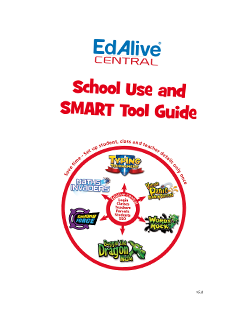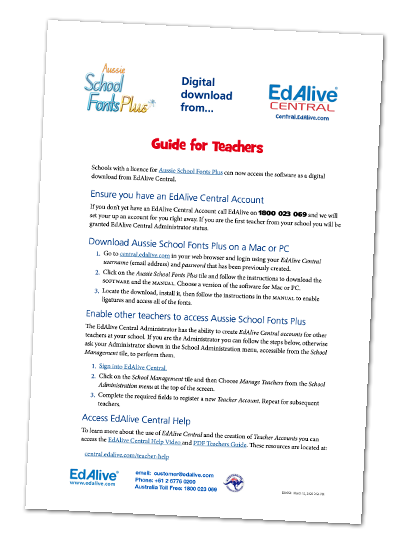SMART Tool - Link Existing Student SAML Credentials after SAML Setup
Introduction
After setting up a SAML Trust Relationship between EdAlive Central and your school’s SAML Identity Provider (e.g. Azure), it is best practice to prelink your existing EdAlive Central Student Accounts with their SAML credentials.
If this is not done, students will have to manually link their EdAlive Central account with their SAML credentials on their first login via SAML.
If this is not done successfully, duplicate Student Accounts may be created which won’t contain the students’ previous record of work in the EdAlive educational content.
Depending on the SAML NameID format that was chosen during SAML setup, this process may require administrator access to the SAML Identity Provider to export a list of students that includes their SAML NameIDs.
Getting Started.
From the School Administration menu choose SMART Tool.
Stage 1.
Export a student spreadsheet from your school’s SIS/SMS or SAML Identity Provider that contains all the students in the school, and includes the columns:
- First Name - required
- Last Name - recommended for matching with existing accounts
- Student ID - recommended for accurate matching with existing accounts
- NameID - required for SAML account linking e.g. Azure user.objectid or user.userprincipalname
Click the Next button to proceed to Stage 2.
Stage 2.
Select your student spreadsheet file and click the Next button.
Stage 3.
The next page will try to automatically match your Student-Import Records with the EdAlive Central Student Accounts based on their Student IDs or First and Last Names.
You can manually match additional students by selecting a Student-Import Record and an EdAlive Central Student Account and clicking the Match/Merge button.
If a significant number of Student Accounts show an incorrectly unmatched status, consider going back to Stage 1, adjusting the student spreadsheet to include matching Last Names and/or Student IDs and then selecting the Student-Import File again.
Ensure that Student Accounts are matched where possible to prevent duplicate Student Accounts from being created.
Stage 4.
Continue through the SMART Tool by clicking the Next buttons, and finally click the Save & Apply button.
The existing Student Accounts have now been linked to their SAML credentials.
Related Articles
SMART Tool
The following SMART Tool Stage-by-Stage Guides will help you Manage your students accounts: SMART Tool - Importing Students for the first time SMART Tool - Performing a School Rollover SMART Tool - Cleaning up duplicate Student Accounts SMART Tool - ...SMART Tool - Student Rollovers for SAML-linked Schools
Introduction A Student Rollover is a process that involves registering Student Accounts, deleting Student Accounts that are no longer needed, and optionally sorting all Student Accounts into Classes. Additionally, a SAML-linked School can use student ...SMART Tool - Relink Student SAML Credentials after NameIDs Changed
Introduction If your school is currently using SAML logins with EdAlive Central and the NameIDs of the students have changed, this guide will explain the process of updating the EdAlive Central Student Accounts with the new SAML NameIDs. SAML NameIDs ...SMART Tool - Student Rollovers for SAML-linked Multi-School Groups
Introduction A Student Rollover is a process that involves registering Student Accounts, deleting Student Accounts that are no longer needed, and optionally sorting all Student Accounts into Classes. Additionally, A SAML-linked School can use student ...SMART Tool - Cleaning up duplicate Student Accounts
Introduction This guide will help in the merging of duplicate Student Accounts that may have been accidentally created. Merging duplicate Student Accounts is preferable to deleting duplicate Student Accounts when a student has completed educational ...







